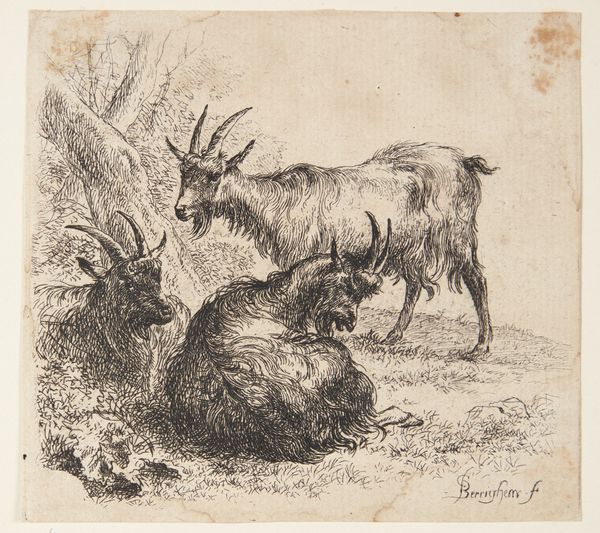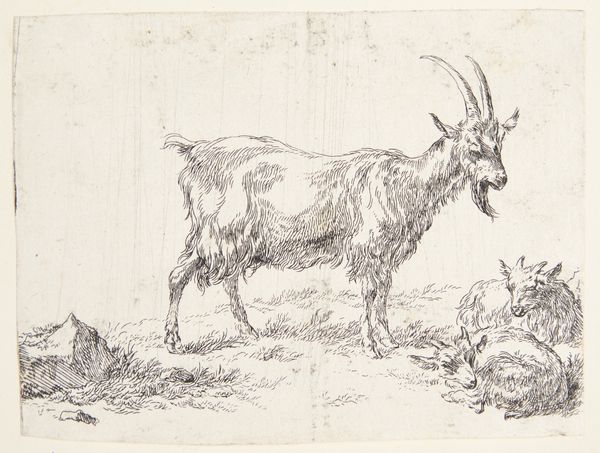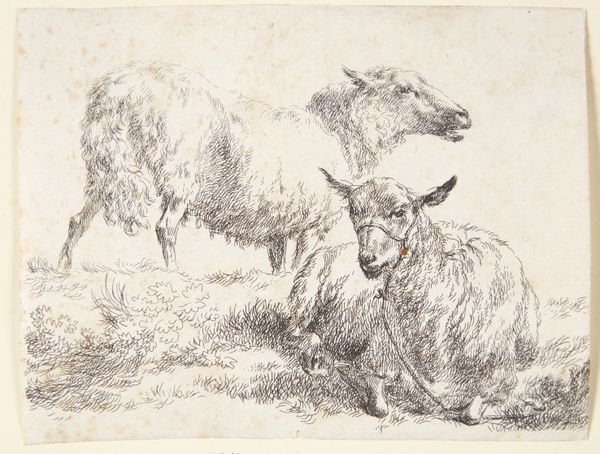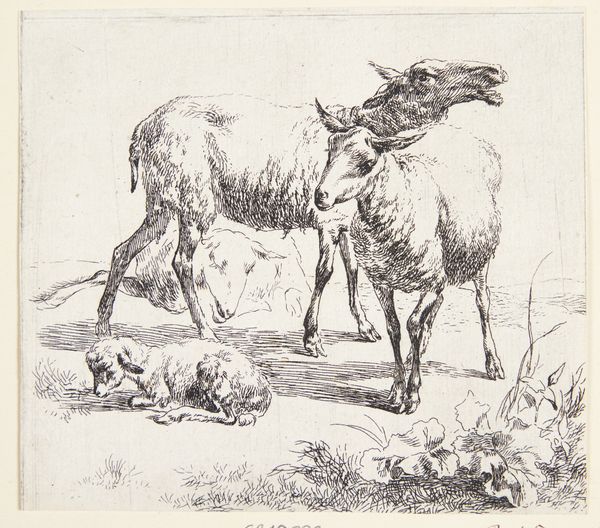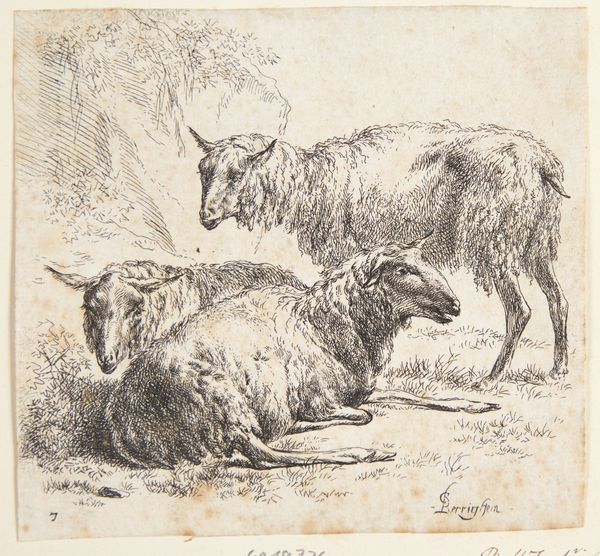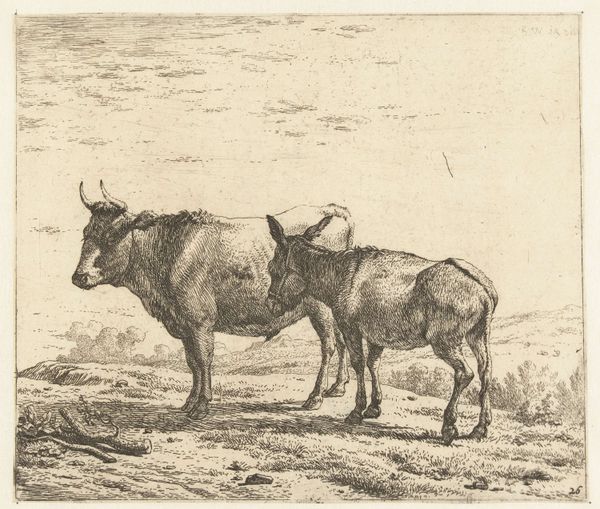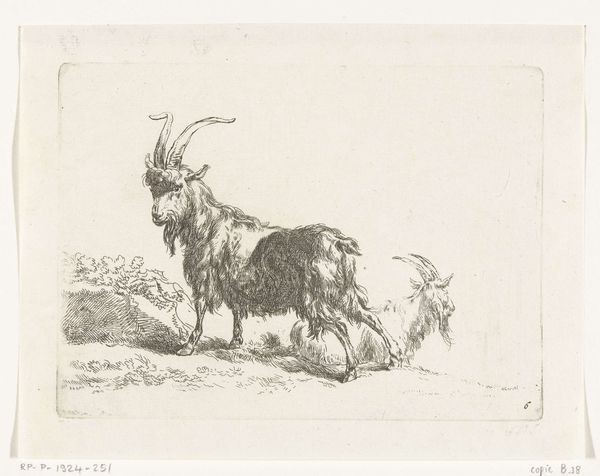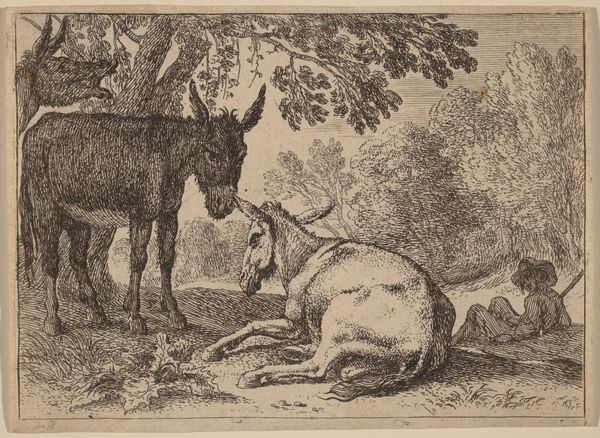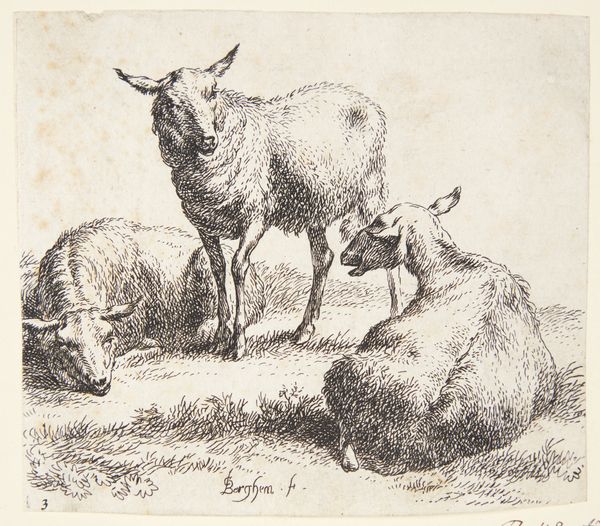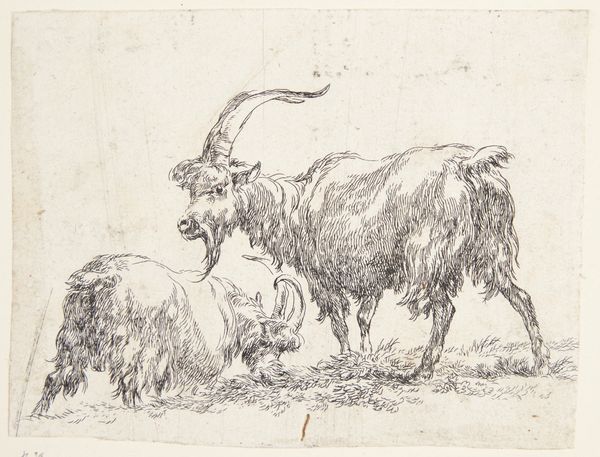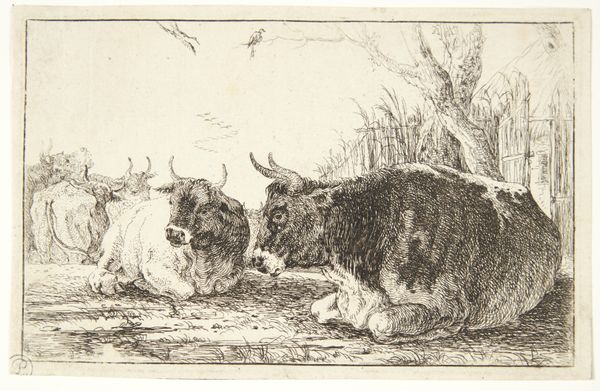
print, etching
#
baroque
#
animal
#
dutch-golden-age
# print
#
etching
#
landscape
#
realism
Dimensions: 102 mm (height) x 111 mm (width) (plademaal)
Curator: So, what strikes you about this piece right off the bat? Editor: Total woolly chaos! I mean that in the best way. It’s like a herd of sheep exploded, and somehow, art happened. Is that goats, actually? Curator: Precisely. We’re looking at “Three Goats,” or “Tre geder” as it’s known in Danish, an etching created by Nicolaes Berchem, a Dutch Golden Age master, sometime between 1620 and 1683. The print medium, etching, facilitates the expression of realism, in its close adherence to real life objects. The artist is celebrated, precisely, for realism in animal depictions. Editor: That explains it, then. And, etching – that’s a seriously involved process. You scratch the image into a metal plate with acid? Gives it that lovely grainy texture, like everything’s just a little…fuzzy around the edges, makes them seem tangible somehow. It works wonderfully here – makes those goats practically leap off the paper. Look at the varied direction and pressure used to represent fur. I bet he worked from sketches of real goats. Curator: Without a doubt. And notice how the composition isn't merely representational, it actively draws the eye. The strategic placement of each animal creates a subtle triangulation, with their varied stances forming dynamic lines that lead to focal points – primarily, those impressively rendered horns. The effect directs our gaze inward. Editor: "Impressively rendered horns" – I like that. It sounds appropriately academic for something that basically boils down to: look at the cool goat antlers! But you’re right, the goats' poses are clever, not static, it gives a real vitality to what could easily be just three furry blobs on a page. Is there any symbolism going on, beyond just "goats exist"? Curator: Possibly. While it avoids explicit symbolism, pastoral scenes in this era frequently invoked classical themes, sometimes representing a golden age. The animal presence could indicate humans’ relation to nature, and these relation would take a number of symbolic forms depending on period and local understanding. But it mostly plays at an allegorical landscape rather than pointed moralizing, and does not appear in any historical or mythical allegorical system. Editor: Interesting! I tend to gravitate towards the purely aesthetic value in cases like this one. The way he suggests depth, purely through the line work... it makes you think about the hours this man spent just looking, *really* looking at goats. Makes me weirdly philosophical about what it means to truly see something. Anyway! So, to summarize: we've got dynamic lines, fuzzy textures, and existential goat thoughts. I'm calling it a win. Curator: Indeed, a compelling etching where meticulous realism meets astute artistic design. Thank you, Nicolaes.
Comments
No comments
Be the first to comment and join the conversation on the ultimate creative platform.
